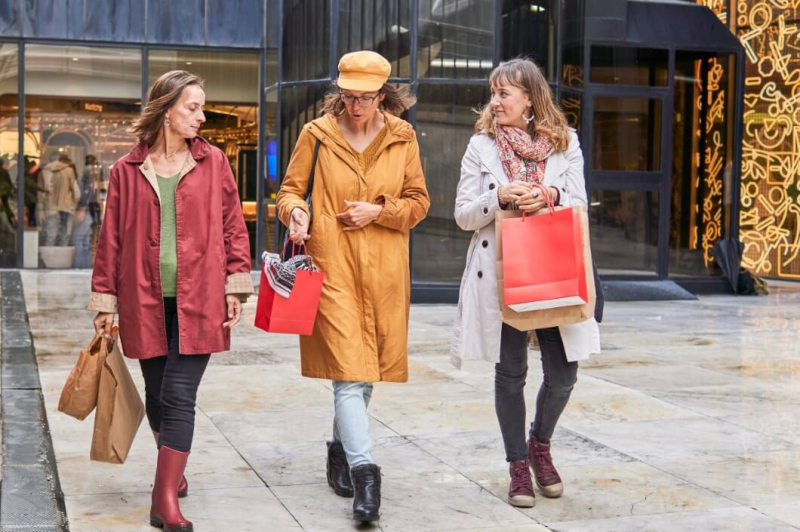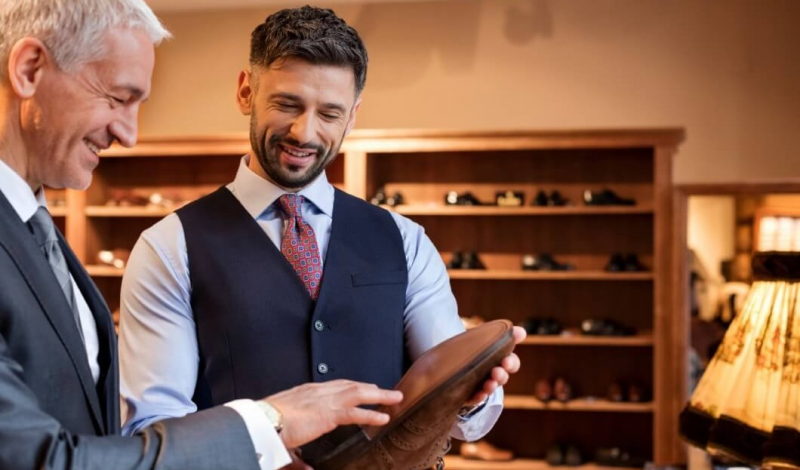Spain is trending, big time. Envision Madrid’s streets jammed solid, Marbella’s docks overflowing with yachts, and every show at Santiago Bernabéu completely sold out, attracting VIPs from all corners of the globe. Figures from the National Institute of Statistics show that some 66.8 million international visitors arrived in the initial eight months of 2025. The country may well be heading for another record year, even outdoing the rush before the pandemic.
These travelers are certainly not frugal; each spends, on average, around €1,457— a gain of 3.6 percent over the previous year. The World Travel & Tourism Council predicts that tourism will pump upwards of €260 billion into Spain’s GDP this year.
Luxury shopping tourism sits at the heart of this expansion. Roughly half of what big spenders are forking out goes on luxury goods. Bain & Company’s “Luxury Goods Worldwide Market Study 2025” indicates that Spain ranks as Europe’s third-largest luxury market, having overtaken Germany but still behind France and Italy. Mar Sánchez Villalta, CEO of luxury tourism consultancy SBC International Services, insists that “Spain needs to build upon its premium shopping destinations to help offset any seasonal declines. The luxury tourist looks for authentic local experiences, top-notch service, and also sustainable options; this is crucial for competing globally in places like Ibiza, Mallorca, or Marbella.” Enrique Bellver, CEO of Maestro Viajes, says much the same: “Affluent travelers want a story, some cultural connection, personalized attention, and guaranteed security. For them, buying something is more than just a transaction; it’s an immersive experience.”
From historic streets to private villas, Spain’s top cities—Madrid, Barcelona, and Marbella—are redefining luxury. In their own Iberian style, they rival Paris, Milan, and even Dubai. Think discreet indulgence mixed with extravagant experiences under the Spanish sun.

Madrid: Where Tradition Meets Tailored Opulence
Madrid is undoubtedly the main attraction, skillfully combining historic locales with very exclusive spots. In the Salamanca district, the Golden Mile (especially José Ortega y Gasset street) is home to the world’s leading brands—think Hermès, Chanel, Louis Vuitton. Cosmopolitan crowds swarm here, with local elites mixing with international influencers. Inmaculada Pérez-Castellanos, CEO of Madrid Luxury District, emphasizes that “Ortega y Gasset remains among the world’s most prestigious addresses. The trick is crafting unique experiences for discerning, quality-focused customers – moving beyond simply selling things to creating a whole ecosystem of personalization, limited items, and after-sales service.”
Complementing this more established scene are places like Galería Canalejas, a multi-brand destination bringing together fashion, jewelry, cosmetics, and lifestyle under a single, luxurious roof. Here, discretion is key: visitors enjoy private entrances from the garage to private suites, private salons with dedicated stylists, and sneak previews of new collections. This is all aimed at prime ministers, royalty, business leaders, and even film stars. Karine Title, CEO of Galería Canalejas, notes that “Luxury spending has changed. Luxury now means outstanding experiences—privacy, service, and exclusivity. We have created a Madrid-exclusive location to compete with Paris’s grand magasins or London’s iconic stores, all infused with our particular local character.”
Despite a slight slowdown in US spending in 2025, rising demand from Asia, the Middle East, and Latin America cushioned the impact. Paris saw an 18 percent increase in Middle Eastern spending in the first half of the year, while Milan enjoyed a 22 percent surge in Chinese spending following the lifting of restrictions. “Seasonal variations and changing customer demographics affect the volume of sales,” Title points out, “but total revenues are still increasing, as quality is valued more than quantity. Travelers are looking for tailored adventures, rare items, and attentive care, which translates to higher average spending and stronger brand loyalty.” Madrid now accounts for almost 47 percent of Spain’s luxury sales, a trend moving away from the demise of Barneys New York in the ’90s towards integrated hubs that blend shopping with dining, art, and workshops.
Click here to preview your posts with PRO themes ››
Similar models can be seen globally: Paris’s La Samaritaine (reopened in 2021 after 16 years after being renovated by LVMH) combines flagship stores with top-tier restaurants and art galleries; Tokyo’s Bvlgari Midtown Yaesu pairs merchandise with Michelin-starred dining; and Dubai’s Fashion Avenue offers valet parking to private shopping suites. Madrid’s compact core, however, with its unique cultural cachet, elevates it beyond London’s Harrods Private Suites or Manhattan’s Hudson Yards, which also push the boundaries of luxury retail.
Barcelona: Passeig de Gràcia and its Continuing Appeal
Passeig de Gràcia, that enduring gem of Catalonia, stands tall as one of Europe’s key luxury destinations, a modernist masterpiece where the brilliance of Gaudí provides a backdrop for global luxury brands. It’s the combination—a rich heritage, a prime location, and the presence of top brands—that truly establishes Barcelona as an essential stop for luxury shopping tourism. Brands are making significant investments, exemplified by the recent opening of Carrera y Carrera’s expansive flagship store. According to Communications Director María Pérez, this “sensory sojourn in jewelry, art, and design,” is more than just a store. Apparently, the long lines seen since the opening clearly show Passeig de Gràcia’s status as Southern Europe’s luxury leader.
Data from Global Blue in 2024 shows the growth: luxury tourism sales increased an impressive 29 percent compared to the previous year, and visitors from Asia, America, and the Gulf region are coming back and spending freely. The appeal of Barcelona? It’s how the history combines with modern luxury: imagine browsing Prada near Palau Güell, then enjoying tapas close to La Pedrera. As investments increase, the promenade shows that in luxury, timeless appeal leads to lasting returns.

Marbella: Pioneering Paradise, Year-Round
Marbella, a key location on the Costa del Sol, has evolved to become a year-round luxury destination, its retail scene now rivaling well-known locations along the Riviera. The Marbella Club is leading the way, blending hospitality with fashion in a harmonious manner. Following Chanel’s in-hotel flagship, Bottega Veneta and Loewe have also opened stores—creating easy access for high-end customers without the hustle and bustle of city shopping. According to the resort, it’s a mix of elite international guests, longer visits, higher average spending, and privacy. Brands consider these locations as “organic outposts, connecting directly to devotees.”
Marbella is no longer a place for just the summer; its ecosystem, with everything from sustainable yachting to custom beachwear and eco-friendly estates, attracts people for longer stays and larger spending. For the wealthiest, it is all about intimacy, such as private showings on patios surrounded by palm trees, where purchases show authenticity.
Spain’s Impressive Luxury Shopping Future
As we look ahead to 2025, Spain’s luxury sector is more than just numbers; it’s creating a legacy. Record numbers of visitors and profits, combined with changing customer preferences, are evidence of a sector that is not just growing, but also becoming smarter by focusing on authenticity, sustainability, and storytelling. As Title concludes, “It’s about foresight, adaptation, and dynamic delight, not just attraction.” It seems that Spain, especially Madrid, is solidifying its global presence.
Within this Spanish story, international visitors are more than just tourists; they’re dedicated fans, filling both famous streets and less-known places with money and style. From the success of Ortega’s businesses to the attractions of Marbella, Spain suggests that luxury is at the heart of its culture. The world is paying attention, wallets at the ready.


